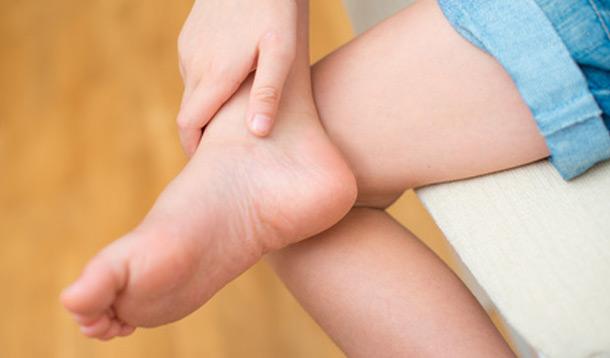
It’s not unusual for a parent to bring a young child in to see me because of a sore leg, or a sore arm, or a limp that seems to have appeared from nowhere. It often turns out the kid had an awkward landing on the trampoline, or a tumble off the climbing equipment at school, and it’s nothing worse than a strain. I might do an X-ray to be sure, but when the symptoms go away in short order and nothing more comes of it, we chalk it up to regular childhood stuff.
A few years ago, I saw a 3 year-old girl whose mother was concerned because of persistent complaints of sore legs. She also had intermittent fevers, and a pale rash that would come and go. The symptoms had been happening for about six weeks—off and on. Her mom really didn’t know what to make of it; she’d been to a walk-in clinic the first time her daughter had a fever and vague aches and was told it was a viral infection and would go away. Which it did. But then it came back. When she noticed her daughter had a limp after napping, she brought her in to me.
Something didn’t feel right about the whole picture. I ordered some tests and then referred her to a rheumatologist. It took a while for the rheumatologist to pin down the final diagnosis—several other conditions were being considered and had to be ruled out—but word eventually came back to me that the child was being treated for Juvenile Idiopathic Arthritis (JIA).
It may come as a surprise to you that children can develop arthritis. Most people think of arthritis as a condition that only affects adults, but that’s not the case.
Juvenile Idiopathic Arthritis affects one in 1000 children in Canada. "Juvenile" means young (16 years of age or younger) and "idiopathic" means the cause is not known. JIA is also sometimes called Juvenile Rheumatoid Arthritis (JRA). It’s four times more common in girls than in boys.
JIA, unfortunately, is not an innocent condition. It can cause great hardship, emotionally and physically, on a child and his or her family. In addition to chronic joint pain and inflammation, there can be physical complications in other parts of the body, like inflammation of the eyes. And it can also, depending on how severe and involved the arthritis, impair a child or teen’s growth.
Diagnosis can be a tricky thing, however. There can be a long delay in identifying and confirming the condition. One part of the problem is that the symptoms of JIA can mimic many other conditions. Also, many parents are unaware that children can get arthritis, and may not bring their child in when symptoms first appear.
So that’s what I’m aiming to change.
I want you to be aware of the signs and symptoms, so—as unlikely as it is—if your child does start exhibiting signs, you know what to do.
![]() Here are the common symptoms:
Here are the common symptoms:
JIA can affect anywhere from one to several joints in the body. Some children also experience systemic symptoms that affect the entire body, like fever, rashes, and swollen lymph nodes. It’s typical for symptoms to go through phases where they flare up and then later disappear.
If your child has any of the above: joint stiffness, pain, or swelling that lasts for a week or more—especially if there are systemic signs like rash or fever—you should bring your child to see the doctor.
There are treatments for JIA once diagnosed but, being a chronic condition, it can take a great toll on a child’s family. Parents and siblings of a child diagnosed with JIA need lots of support. The medications we use to treat arthritis are the same in all age groups—we adjust the doses for children and teens based on weight.
With my young patient, once the initial treatment had been started, I saw her and her family back in my office regularly to make sure they were well connected with the resources they needed: The Arthritis Society, specialists, clinical counsellors, and a local support group.
Connecting with your doctor early, to make the diagnosis, and often—to get the treatment and support you need as a family—is key.
